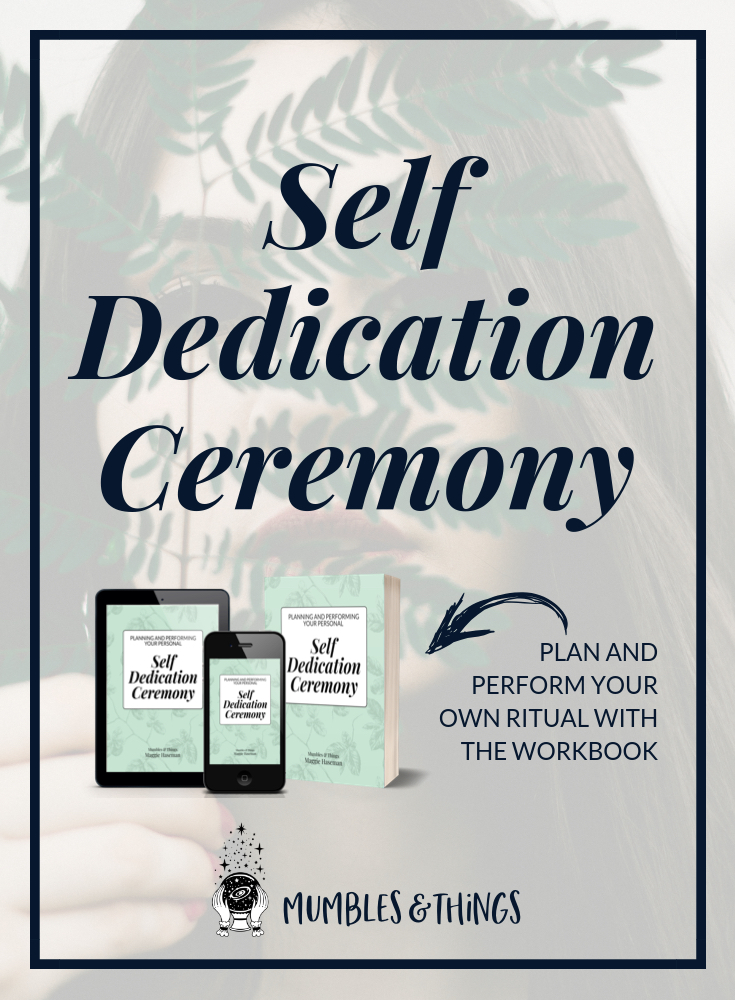How to Grow a Witch's Garden
One of the easiest ways to connect with your higher power is through spending time in nature. You can create your own enchanting nature area at home by growing a garden.
When I say garden, I simply mean a collection of plants. Whether you live in a house with land or a tiny apartment with only a window sill, you can grow a witch’s garden. All you need is a bit of earth, some natural light, and a willing spirit.
Growing, observing, and working with plants is a pretty witchy thing to do. Communing with nature, connecting with plants and learning to understand them is magical and is the basis of many traditional practices and herbalism.
From planning, to planting, to growing and harvesting, your magical garden will provide thousands of hours of peace and enjoyment. Even if you have never gardened in your life. Begin small and watch your garden grow! Here are some magical tips to help bring you an amazing connection to nature.
Mother Nature
Before you begin growing, take an opportunity to visit nature. You can learn some powerful lessons and fill yourself with a sense of calm through spending time outdoors, especially in an undisturbed area where few people venture. This gives you the opportunity to see Mother Nature’s handiwork and carry these vibes home with you to your garden.
While you are out and about, take note of which types of plants grow naturally in your region. Take a plant identification book with you so that you can identify plants. You can purchase a new or used book from your local bookstore or check out your library to see what you can borrow. There are also several plant identification apps that you might want to test. Research whether these native plants have any culinary, magical, or medicinal properties. This will give you a good idea of what will be easy to grow in your own garden.
Planning
At this point you’re ready to start planning your witchy garden. Our ancestors used the winter months to plan and prepare for the growing season. In the northern hemisphere, this is from Yule, December 21st to Ostara, March 21st. You might consider making planning your magical garden part of your Imbolc tradition.
If you are new to gardening, it is best to start small and grow as you learn. Get ideas for gardens by looking through garden magazines, scrolling through Pinterest, and reading books.
Visualize the garden you would like to have with your eyes closed. Make plans for how you will accomplish this. Remember that if you have big plans, it could take several years to get to your ideal garden.
Make notes about the area you will keep your garden in. How big is it? How many plants can you reasonably fit there? Consider your soil quality and the amount of sun your garden location will receive as well. Pay attention to the way the sun moves. Different areas of your garden location will have different access to light throughout the year.
Decide what kind of garden you’d like to grow. Will there be a theme? Japanese? Celtic? Victorian? What will be the focus of your garden? Do you want to attract pollinators? Are you hoping to use your plants primarily for cooking? Are you hoping to create beautiful bouquets to bring inside?
Take some trips to your local garden and hardware stores. Ask questions of the people who work there. They know a lot about growing things in your area!
Choosing Plants
Choosing plants to grow can be overwhelming. Seriously, there are a lot of different types of plants. If you’re new to gardening you will probably want to choose easy-to-grow and edible magical herbs. Below are fourteen plants that are pretty indestructible, so long as you are actually trying to keep them alive.
A Quick Note About the Resilience of Plants: Plants are Resilient.
Remember that plants can lose almost all of their leaves and still recover. Before you throw out a struggling or sickly looking plant try moving it to a new area of your garden where it gets more or less light. Often times it will make a full recovery.
I once had a peppermint plant that I kept in the pot I had purchased it in for a bit too long. It turned all brown and I thought it was dead, for sure. I moved it to a new location with more light and it made a full recovery within a week.
Related: The Ultimate Guide to Kitchen Witchery
Basil
Do not plant with cucumbers, rue or snap beans
Do plant with peppers and tomatoes
Magical Properties: harmony in the home, soothing unhappy feelings, blending energies to find compromise, good luck, wealth, love
Bay
This plant is a tree so it is not compatible to grow with anything.
Magical Properties: divination, seeing clearly, understanding new information, protection, cleansing, banishing ghosts, physical vitality, wishes
Chives
Do not plant with beans
Do plant with carrots, celery, grapes, peas and roses
Magical Properties: good health, cleansing, protection, keeping love near
Dill
Do not plant with carrots, fennel or tomatoes
Do plant with fruit trees and cabbages
Magical Properties: long life, preservation of hearth and home, job protection, cultivating opportunities
Lemon Verbena
Do plant with other aromatic and meditative plants
Magical Properties: love, personal strength, attracting passion for people and activities, banishing nightmares, cleansing sacred spaces
Marjoram
Do not plant with cucumbers
Do plant with sage and vegetables
Magical Properties: love, protection, health, happiness, strength, wealth, money
Mints
Do not plant directly in the ground because they spread like crazy. It’s best to keep them in a pot.
Do plant with broccoli, cabbage and peas
Magical Properties: money, safety in travel, love, cleansing, concentration and focus, stress relief
Oregano
Do plant with beans, cucumbers, and squash
Magical Properties: money, love, lust, good health, protection, happiness
Parsley
Do plant with asparagus, corn, peppers, tomatoes
Magical Properties: growth, cleansing, protection against accidents at home or while traveling
Rosemary
Do not plant with cucumbers
Do plant with cabbage, beans, carrots, sage
Magical Properties: basically anything—love, protection, cleansing, mental clarity, lust, healing, sleep, stress relief, youthfulness
Sage
Do not plant with cucumber or onions
Do plant with rosemary, carrots, marjoram, strawberries, tomatoes, lavender
Magical Properties: wisdom, wishes, knowledge, strength, long life, spiritual cleansing
Savory
Do plant with beans, onions and sweet potatoes
Magical Properties: learn secrets, answer questions, general knowing and mental clarity, love
Tarragon
Do plant with vegetables
Magical Properties: harmony in the home, protection, cleansing
Thyme
Do not plant with cucumbers
Do plant with cabbage, lettuce, eggplant, potatoes, strawberries and tomatoes
Magical Properties: courage, long life, health and healing issues, cleansing, love, dream magic, sleep, gaining knowledge
Planting Schedule
Once you’ve chosen the plants you’d like to grow and have a good idea about how you’d like it all to look start making a plan for when you’ll begin planting. Are you going to grow from seed or purchase starters from a greenhouse? Will you be using raised garden beds, a flat-earth plan, containers or some combination?
As you’re planning, think about plant height and diameter, whether the plants will need support like a trellis to grow up, sunlight needs, soil drainage, and other factors.
You’ll want to draw a diagram.
A Quick Note About Plant Tags: Plants from the greenhouse normally come with a tag that explains light, temperature, and water requirements. Seed packets also carry this information. These are generally useful but can sometimes be inaccurate for your specific area.
When trying a new plant in your garden, keep it planted in a pot to start. This way you can see how it behaves in various areas of your yard. If you find a location that it seems to thrive, transplant it into the soil. You can always move it later if you need to.
Many witches choose to garden by the moon cycle. As you are probably aware, the lunar month is the period from New Moon to New Moon which last about 29 days. We can divide the phases into four quarter: New Moon to First Quarter, First Quarter to Full Moon, Full Moon to Third Quarter, Third Quarter to New Moon. You can plan your planting around each of these moon phase quarters in the following way:
New Moon to First Quarter
This is a good time to plant crops that you want for their leaves and flowers or for any part that doesn’t contain seeds—lettuce, cabbage, most herbs—and for annuals, which finish their growth cycle in a single season.
First Quarter to Full Moon
Plant annuals that you want for the parts that contain seeds—peas, beans, fruits, grain crops and herbs you grow only to collect seeds during this time
Full Moon to Third Quarter
Anything that bears the part you plant to use below ground can be planted during this time—roots, tubers and bulbs.
This is also a good time for pruning and for harvesting crops, especially fruit that you will store for more than a few days.
Third Quarter to New Moon
Do not plant or transplant during this time. This is a time for weeding, harvesting, drying, canning and preserving.
Related: Working with the Moon's Energy
Good Garden Vibes
We can also divide the moon phases into two halves: the time when the moon is growing from dark to fully illuminated or the waxing phases, and the waning phases during which the moon shrinks back to dark.
When the moon is waxing you can cast spells and practice magic that invites abundance and prosperity into your garden. While it is waning, plan to do magic to protect it from harm and remove energy that doesn’t benefit it.
Make sure that while you are puttering around in your garden, you are conversing with your plants. It has been proven several times that plants which receive positive words of encouragement grow more productively than plants that do not.
While our plants can’t respond to us in a typical human conversation, they are wise and communicate in their own plant way. Ask the plants how they are doing, and check in on their wellbeing by observing changes.
Through gardening, you take from the land, so be sure to give back by replenishing it with nutrients, organic matter, water, and new plants. Add worm castings to your garden, make comfrey tea for your plants, and mulch with compost.
Harvest
Whenever you harvest from your garden, try to do so under the moonlight. This insures your produce has not withered in the heat of the sun and can feel extraordinarily witchy. But please, only do this if it is safe for you to be roaming around your garden at night.
You can also leave a watering can full of water out overnight to charge it with the moon’s energy if you don’t want to harvest at nighttime.
Be sure to share your harvest with others. By releasing and giving these gifts of your labor, you make room for new growth and more abundance in the future.
Remember that witchy gardening doesn’t stop after your garden is planted. Make your gardening tasks your favorite part of your daily routine by visiting often to check in on your plants.
References and Resources:
Medicinal Herbs by Rosemary Gladstar
Mother Nature’s Herbal by Judith Griffin
Encyclopedia of Natural Magic by John Michael Greer
Hedge Witch by Silver Ravenwolf
Garden Witch’s Herbal by Ellen Dugan
Cunningham's Encyclopedia of Magical Herbs by Scott Cunningham
This post is part of a series. Follow the entire Witchcraft 101 collection:
Would you like to belong to an inclusive community of modern witches?
You are invited to join a coven of modern witches who are seeking to improve their witchcraft practice and manifesting skills, and to connect more deeply to their intuition in their everyday lives.
Inside Mumbles Academy, you’ll have access to our community. It’s designed to help you boost your manifesting confidence and connect you with your witchy circle.
Continue your journey and share your experiences on the Mumbles and Things Facebook page.









